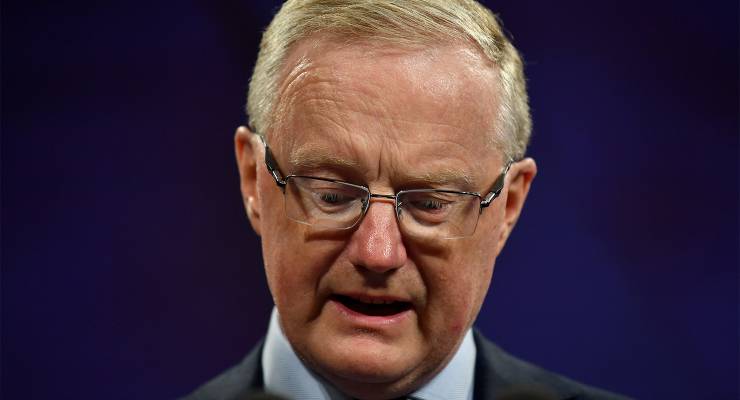
One justification for the Reserve Bank review was its ill-considered forecast of there being no changes in interest rates until 2024. This quickly became a critique of the way it had “lost” control of inflation, thus forced to make 10 rate rises in rapid succession.
In terms of partiality and ignorance, the attacks on the central bank had all the hallmarks of Tony Abbott’s attacks on the Rudd and Gillard governments. Now they have won. A three-person committee has delivered a report and poor Treasurer Jim Chalmers will later today announce wholesale changes to the central bank and its rate-setting mechanism.
These include the Reserve Bank board being stripped of its power to set interest rates and replaced instead by a board of monetary policy experts. It’s the biggest shake-up to Australia’s economic policy settings since the 1990s when the RBA became officially independent of the federal government.
Designed by committee
The change would bring the central bank into line with its international peers, such as the Bank of England, media reports have said. That’s not too hard to understand given that Professor Carolyn A Wilkins, an external member of the financial policy committee of the Bank of England until 2024, is a panel member of the RBA review.
All those supporting these Chalmers-led changes — this committee addition in particular — are in for disappointment.
The Bank of England has a governance board and then a monetary policy committee made up of internal and external economists. But its current record is pretty poor. In fact, at the moment, it could be argued its committee has lost control of inflation.
The RBA, on the other hand, has managed to get inflation down from a peak of 8.4% (according to the Australian Bureau of Statistics monthly indicator) to 6.8% in February. That is significantly better than the Bank of England’s performance, where the monthly inflation rate remained (surprisingly) above 10% in March and February.
The RBA’s inflation peak has also been lower than in the UK and US and on a quarterly basis — 7.8%, lower than in Canada. In fact, the British inflation rate peaked higher than Australia’s at 11.1% last October and hasn’t been under 10% since September 2022. February saw a surge back to 10.1%, led by a 17.5% jump in food and came in at 10.1% in March when it was forecast to fall to 9.8%.
Welcome changes
Chalmers’ changes to the board will be long overdue. For too long the RBA board (excluding the governor, deputy governor and treasury secretary) has been dominated by out-of-touch business people.
Current board members Wendy Craik and Mark Barnaba have their terms finishing this year. Barnaba’s board membership in particular is indicative of the problems, not because he is a board member of Andrew Forrest’s Fortescue Metals Group and other organisations, but because he is a board member of the Centre for Independent Studies (CIS), a conservative and highly partisan think tank.
Alison Watkins, a former chair of Coca-Cola Amatil and non-executive director of Wesfarmers (a breeding ground for Business Council board members) is also a board member of the CIS.
Why the Coalition governments of Malcolm Turnbull and Scott Morrison didn’t insist on both relinquishing their board positions at the CIS is quite astounding. No other board member has a similar position — especially on the left or even the centre of politics.
It is appalling the CIS managed to get two of its board members on the Reserve Bank board when there was no one to represent an even larger but less-represented group, labour. And there is no one representing small businesses either.
This alone has made the RBA board look very neoliberal, right-wing and out of touch, especially when it comes to the sensitive issue of wages growth — real and nominal. The RBA was, in fact, hopeless.








What happened to the idea of Sally McManus being put on the board? I’d trust her ahead of any of the afore-mentioned.
Damn straight
Just look at the current board still obsessed with a wage breakout Inflation is largely due to Australia’s duopolies putting up prices but they are still yammering about a wages breakout
I would suggest the RBA partly created the problem by setting interest rates absurdly low while the government was throwing money at all its mates without any balance (except the arts and education). The idea of near zero interest is neoliberal crap and distorts all kinds of investment policy, especially in creating share market bubbles. THe board has no concept of everyday people. I would hope that the new authority contains representatives from the business, education and union communities as well as the damned fool economists who got us into this mess.
Bearing in mind that the RBA has only a single lever, there is one further step in the chain………….
As fast as the RBA was trying to pump money INTO the economy to keep it moving, the ATM “government” were sucking it out in pursuit of the phantom “Back in The Black”.
The only way that “Back in The Black” (almost) worked was by killing the economy stone dead (we were headed for a recession BEFORE Covid hit) and turbocharging asset inflation.
The RBA governors since Glenn Stevens had been continuously warning the “government” of the danger of their policy acting in direct opposition to the RBA. Turns out they were right.
The ATM stacking the RBA board with culture warriors didn’t help.
So the Incompetents stacked the RBA board with their chums………………..
Now find me a Board they didn’t stack.
All those dead-beats need to find a home somewhere………………
Rookwood
Absolutely. They got lucky because of the Federal Government bludgeoning energy companies over their excessive profits and price gouging.
Dr John Hawkins (a former senior economist at the Reserve Bank of Australia) commented in Guardian Australia that: “The inflation target has been successful. Inflation has averaged 2.5% and inflationary expectations are anchored around this rate. Until the Covid-19 shutdowns, Australia had no recession during the inflation targeting period. This may have been the longest uninterrupted economic expansion in history.”
Competent economists and logicians are well aware that this is a classic fallacy – deeming that because two events coincide, one causes the other.
In fact John Hawkins adds cream to the cake by using that fallacy twice – the first, that “The inflation target has been successful [due to RBA action] because “Inflation has averaged 2.5%”, the second, that “The inflation target has been successful [because] … Until the Covid-19 shutdowns, Australia had no recession during the inflation targeting period”.
For all Rudd’s other faults, Labor’s 2007 stimulus filled the investment gap created by the sharp decline in private investment at that time due to the Global Financial Crisis. Kevin07’s stimulus package did what it needed to do. It in fact did it very well, much better than Morrison’s Wealthy HomeBuilder disaster. As Nobel Memorial Prize-winner Joseph Stiglitz said at the time: “Australia, you don’t know how good you’ve got it”. “Inflation targeting” had nothing to do with that.